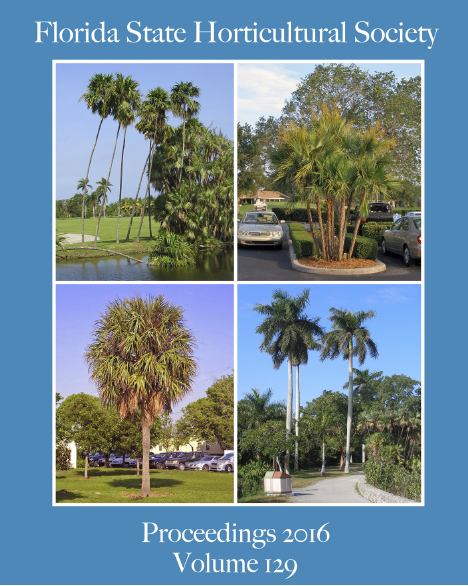Abstract
Papaya plants are typically propagated by seed; however, clonal propagation may be needed to maintain or increase individual selections with particularly desirable characteristics. Previously published methods for rooting small pa-paya shoots utilized rooting hormone in combination with exposure to bottom heat and mist. After one to two months, shoots developed sufficient roots for transplanting in the field, followed by an additional two to five months to flower and set fruit. In the present study, a method using larger cuttings was developed that avoided the need for bottom heat and reduced the period from transplanting to flowering to one or two months. This was achieved using side shoots 2–3 feet in length and having a 1 1/2- to 3-inch basal diameter. The lamina of all mature leaves were removed, leaving the petioles, plus any immature leaves. The base of each shoot was dipped into a rooting mixture containing hydroxyethyl cellulose, streptomycin sulfate, indole butyric acid, riboflavin, azoxystrobin, and Hoagland’s solution and then inserted into well-drained media. Shoots were well rooted within three to five weeks and subsequently planted in the field. Flowering was observed one to two months later.

